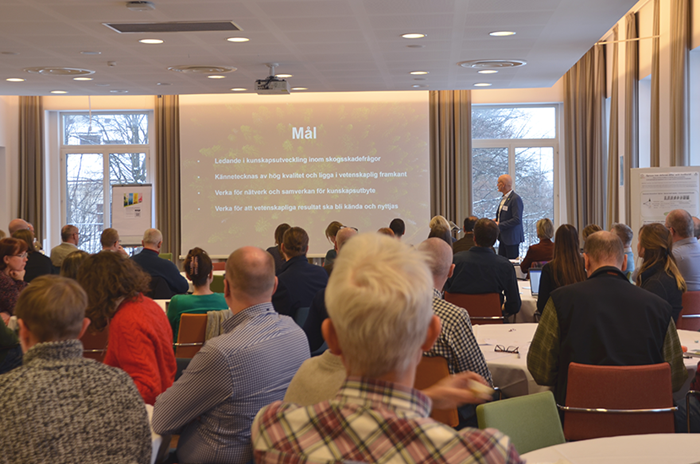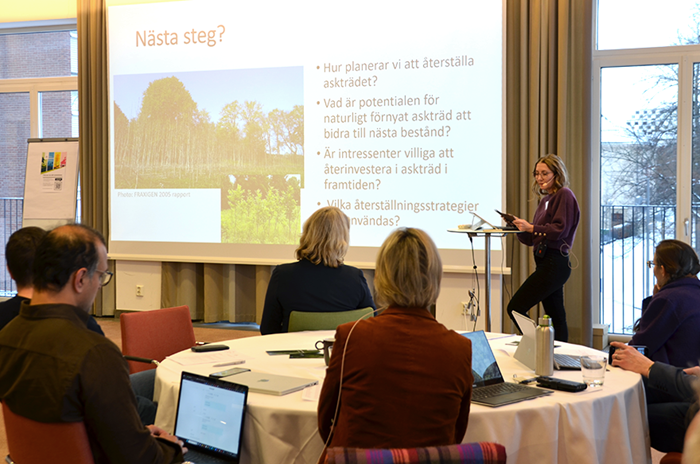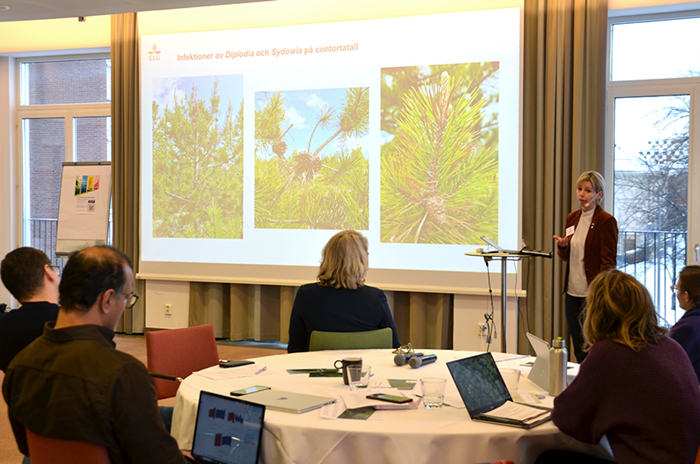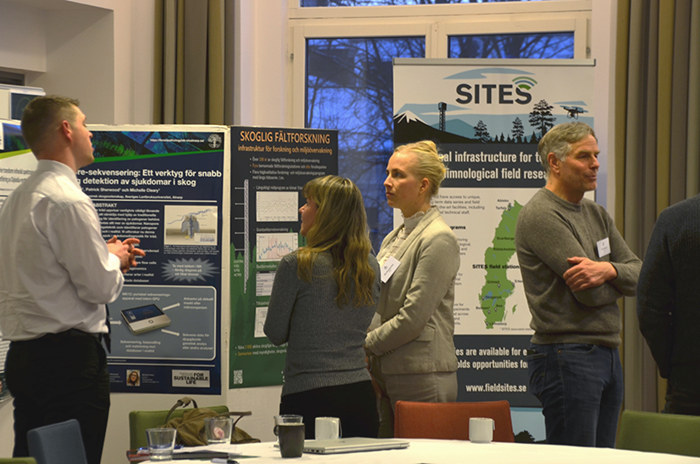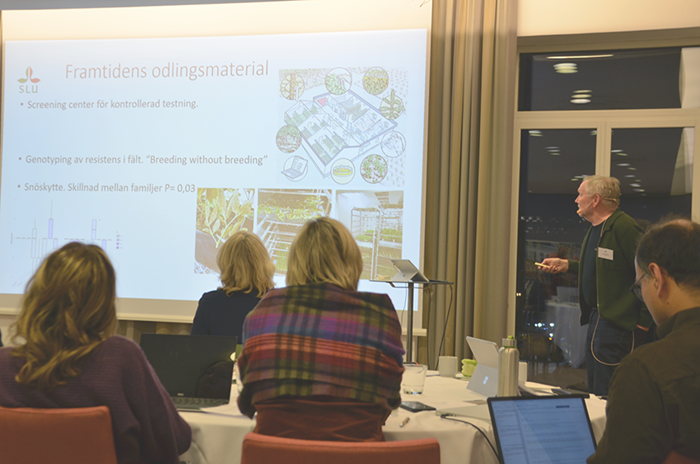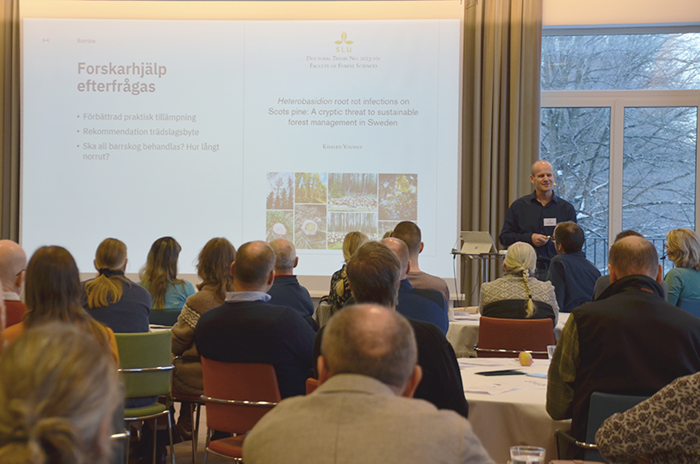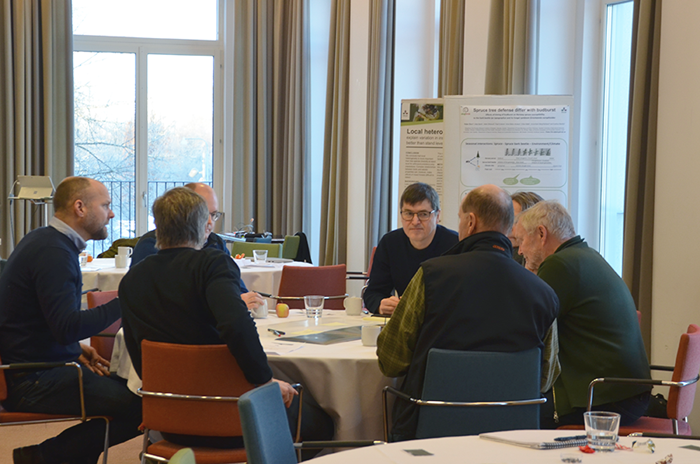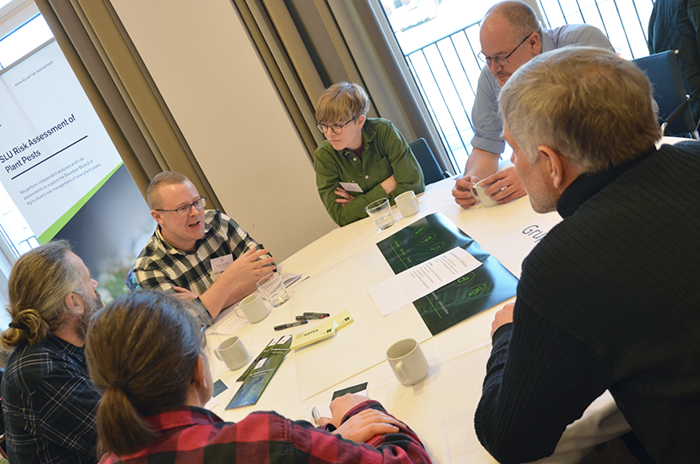Close to 75 participants from authorities, forestry sector, SLU and other stakeholders gathered at SLU Forest Damage Centre’s annual meeting where collaboration was a hot topic. After a warm welcome to all participants Jonas Rönnberg, director of the centre, talked about the organisations goals for the upcoming year.
‒ Collaboration is vital to how we utilise the centre’s capacity in the best way. We can all do better. The annual meeting is a step on that path, says Jonas Rönnberg, director of the SLU Forest Damage Centre.
The participants then took part of current topics within the forest damage area. Leading off was Lennart Svensson, National Forest Damage Coordinator at the Swedish Forestry Agency, who provided an overview of the latest forest damage report. He also highlighted areas in need of knowledge development, including damage in relation to climate change and the impact of drought on forests. Chandra Krishnamurthy, an analyst at the SLU Forest Damage Centre, discussed the analytics report that the centre is working to produce. The aim of the report is to identify knowledge gaps, assess the extent of economic consequences, and understand damage causes from an applied perspective.
The conference's first day then proceeded with a total of ten presentations on current research within the field. One of those who presented was Michelle Clary, researcher at the SLU Forest Damage Centre, who talked about the research project "Rädda asken" (Save the Ash), which is a collaborative project between SLU and Skogforsk. They are trying to determine if there is a possibility to save the highly endangered ash tree, which they hope is possible through breeding.
Iryna Matsiakh, researcher and analyst at the SLU Forest Damage Centre, talked about damages to birch and pine trees. In collaboration with the Swedish Forestry Agency and Södra Skogsägarna, they have initiated a research project to determine the causes of these damages. Anne-Maarit Hekkala, researcher at the Department of Wildlife, Fish and Environmental Studies, talked about an upcoming project in the area of clear-cut forestry and how it is connected with spruce bark beetles, ungulates, and biodiversity. Professor emeritus Jan Stenlid, from the Department of Forest Mycology and Plant Pathology, discussed the collaborative project on multi-damaged forests. Additionally, five more researchers presented current research within forest damage.
During the conference's second day, participants discussed what is required for new knowledge to be put into practice. They delved into the challenges of transferring between research and application, improving efficiency, and what each organisation can do to bridge and facilitate the sometimes perceived gap between research and application. Communication, understanding, and collaboration were highlighted as key themes in the discussions.
‒ I think these types of meetings and what one can take away from them are very positive. I have several specific things that I will bring back to my own organisation, says Olov Norgren at Holmen Skog AB
‒ It has been positive days. It is clear that there is an interest in the fact that we must collaborate in this. It is very reassuring to hear, I think, that everyone is aware that we need each other and each other's knowledge when forest damage occurs, says Eva Stattin at Stora Enso Skog.
Eva explains that someone expressed it as though we are all in the same boat. She herself sees it more as though we are on the same ocean, and that the waves, in this case forest damages, moving across the ocean affect us all. She believes that it is then a matter of navigating somewhat together.
The annual conference is part of the SLU Forest Damage Centre's efforts to collaborate with the forestry sector, authorities, and other stakeholders, providing excellent opportunities for meetings and discussions on forest damage issues.
The SLU Forest Damage Centre thanks everyone for their participation in the conference.
Text and photo: Theres Svensson, SLU

